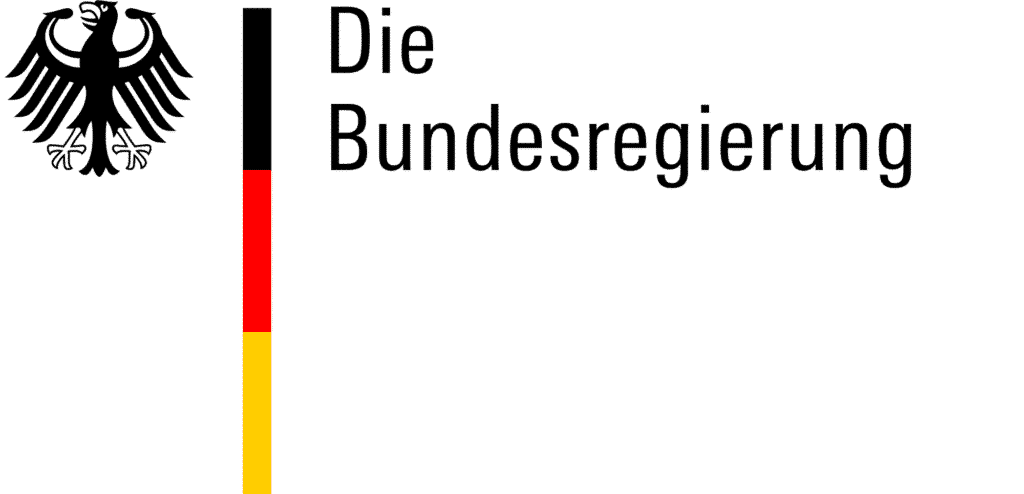Germany on Chain: National Blockchain Strategy Released — Bitcoin Yes, Libra No
On the 18th of September, Germany released a national blockchain strategy (deep link to PDF document). It is a solid strategy. The document is much more than a collection of some single measures. Of course, more aspects could be included and could be desired. But still, Germany is among the first countries in the EU giving this technology the platform of a “national strategy”. In particular, it shows the plan on how to regulate the following types of finance-related tokens: securities, money, crypto assets, stable coins. These upcoming new rules could provide legal certainty and, with it, a legal fundament to create more dynamics in the public sectors (startups, investors, industrial corporations, financial organizations).
By Prof. Dr. Philipp Sandner, Frankfurt School Blockchain Center

Blockchain on the agenda of German government and ministries
It is great that the government is giving significant importance to this technology. Regardless of the content of the blockchain strategy, it is important for the development of the blockchain ecosystem that the federal government and several ministries are having “blockchain” now on their agenda. The reason is that for producing this blockchain strategy, dozens of people within the public administration had to understand the topic throughout multiple levels of hierarchies in various ministries.
With this, blockchain also will get on the agenda for corporations. By the way:
- Are there German companies out there that have a strategy for artificial intelligence? Yes, quite some of them.
- Is Germany having a national AI strategy? Yes.
- Is Germany having a blockchain strategy now? Yes, since 18th of September.
- Are German corporations having a blockchain strategy? No, nothing that has become public so far.
In other words, the government is moving forward whereas hundreds of medium- or large-sized world-class “hidden champions” that produce high quality machinery, sensors and automotive devices do not have blockchain on their agenda yet.
Of course, there are some exceptions such as Bosch, Daimler, Innogy, Commerzbank, Deutsche Börse, SAP, Deutsche Telekom etc. These very large corporations do explore blockchain technology. But the lions’ share of German companies (i.e, the “Mittelstand” including hundreds of hidden champions) is not doing this yet.
Focus on finance, crypto assets, securities
Apparently, the area of finance has some focus in the blockchain strategy with pretty clear tasks that will happen in the upcoming months and years. In very short, this is what will happen:
- Securities on chain: starting with debt instruments (i.e., Schuldverschreibungen) as first experiments to de-materialize securities.
- Euro on chain: E-Money rules are mentioned and therefore “recommended” to get the Euro on blockchain systems. Read more here.
- “Traditional” crypto assets such as Bitcoin or Ethereum etc.: basically allowed for institutional trade under new yet-to-be-specified BaFin license. Read more here.
- Private stable coins such as Libra, gold-backed tokens: will probably be blocked.
To be even more clear (at the risk of being imprecise):
- Securities: green light.
- Euro on chain: green light.
- Bitcoin & Co.: green light.
- Private stable coins: red light.
Reading between the lines, it is very interesting to have “green lights” for crypto assets such as Bitcoin and Ethereum; and “red lights” for those approaches that could potentially develop into an alternative for the Euro concerning day-to-day payments: private stable coins such as Libra etc.
Here are two more articles on some of these aspects:
- Germany Harshly Regulates Crypto Assets as of January 1, 2020: What are the Best Strategies for Blockchain Startups, FinTechs, Banks, Exchanges and Industrial Companies?
- Priorities for Europe and Germany: Both, the Euro and identities should run on the blockchain
Broad array of single measures
The blockchain strategy includes numerous research projects which have already been granted in the past, announcements for future research projects, plans for experiments, potential PoCs in the area of public administration, and round tables on specific issues.
This makes very much sense but here a coherent framework is missing. Nevertheless, blockchain is a cross-sectional technology. As such it makes sense to explore all kinds of use cases. Companies and startups are doing nothing else.
Some interesting aspects
It is interesting that the blockchain strategy puts some focus on areas which are not in the main focus within the blockchain ecosystem so far: For example, it is mentioned in the document that blockchain transactions should be used to provide evidence from a legal perspective. So, for example, blockchain transactions could then be used at court when proving something. The astute lawyer now says that the existing law is sufficient and a lawyer could anyway “argue” that during a trial a blockchain transaction could be used at court. But, frankly, it makes things much easier for thousands of lawyers, hundreds of judges and dozens of courts if the federal government clearly says that blockchain transaction are allowed as proofs at court.
Next, blockchain strategy includes plans that university degrees and certificates could run on blockchain systems. From the perspective of larger use cases out there, this does not feel like the killer use case. But, in my opinion, it is an entry use case into identity management targeted at the user base of young people (i.e., digital natives) that actually could benefit from storing their achievements and parts of their CV data — such as degrees and certificates — on chain.
Missing aspects which would be much bolder
A government naturally has control over several institutions and over a significant share of the infrastructure of a country. Here, the strategy could have gone further, for example, addressing the following areas: identity on chain, commercial register, notaries, elections, GmbH-shares on chain.
Developments on the European level are highlighted but the planned measures do not seem to be well integrated on the higher level with the European Union. This point has two aspects. One the one hand side, it would have been great to have a coordinated approach on the higher level of the European Union. But on the other hand side, if Europe as a whole does not move quickly enough, it is reasonable to move ahead on the national level. Other countries and regions are also moving (China, USA, South Korea, etc.). They are also not waiting for us. Therefore, depending on the perspective, it can also be appreciated that things are moving here in Germany now. Put differently, Germany is “front running” in Europe. Front running has — as always — positive and negative aspects. I actually think, on the bottom line, it is positive.
These missing aspects do not make the blockchain strategy significantly worse. They could have been added because they will be important in the future. Therefore, let’s make these missing aspects part of the future agenda for the next version of blockchain strategy.
Conclusion
If we estimate the money being invested in all these measures on behalf of the government, it is reasonable to argue that all elements of the blockchain strategy appear to be not too “expensive”. Yes, money will be spent on all these measures but the total investment is — compared to other areas where money is being spent currently — quite low.
There is no large investment of, say, 100 million EUR to be invested into blockchain technology. There is no large scale “innovation fund” for blockchain applications. Other countries such as South Korea are doing this and invest hundreds of millions USD in blockchain technologies. In other areas such as artificial intelligence, Germany is also doing this. So, indeed, some kind of blockchain fund for blockchain innovation could be missing.
But is it really missing? More thoughts need to go into this question but with a set of rather clear rules on how to treat different kinds of tokens (security token, Euro token, crypto tokens, stable coins), startups and companies have a legal ground on which they can operate. And such clear rules are now in the making and a subset of them — regarding crypto assets such as Bitcoin and Ethereum — will come into force as of January 2020.
Therefore, startups and larger corporations can now start to invest because the legal fundament is getting more clear and is not “shaking” anymore. Maybe, good legal rules coming rather early than too late are much better than setting up a “national blockchain fund”? This is an open question and therefore just a thought.
In all, I think the national blockchain strategy is a good move for Germany and for Europe. We can always say that aspect X is missing or feature Y would be desired. But it is a solid strategy and more than just a collection of single measures. They key point for this judgement is that the so far most important area in the blockchain area (finance, money, securities, crypto assets etc.) is quite clearly handled. Probably, these rules — and especially the new rules allowing financial institutions to trade and custody crypto assets such as Bitcoin and Ethereum — are already now (September 2019) creating some dynamics among German banks because these rules provide a sufficiently clear (albeit not yet perfect) legal fundament to operate on.
Further readings on some of these aspects:
Remarks
If you like this article, we would be happy if you forward it to your colleagues or share it on social networks. More information about the Frankfurt School Blockchain Center on the Internet, on Twitter or on Facebook.
Prof. Dr. Philipp Sandner is head of the Frankfurt School Blockchain Center (FSBC) at the Frankfurt School of Finance & Management. In 2018, he was ranked as one of the “Top 30” economists by the Frankfurter Allgemeine Zeitung (FAZ), a major newspaper in Germany. Further, he belongs to the “Top 40 under 40” — a ranking by the German business magazine Capital. The expertise of Prof. Sandner, in particular, includes blockchain technology, crypto assets, distributed ledger technology (DLT), Euro-on-Ledger, initial coin offerings (ICOs), security tokens (STOs), digital transformation and entrepreneurship. You can contact him via mail ([email protected]), via LinkedIn (https://www.linkedin.com/in/philippsandner/) or follow him on Twitter (@philippsandner).
Photo by ?? Claudio Schwarz | @purzlbaum on Unsplash
More Articles:
Paris Blockchain Week Summit Announces Its 2020 Speaker Lineup
Blockchain, DLT and Crypto Assets: Trends and Predictions for the New Year 2020
You Might also Like
























